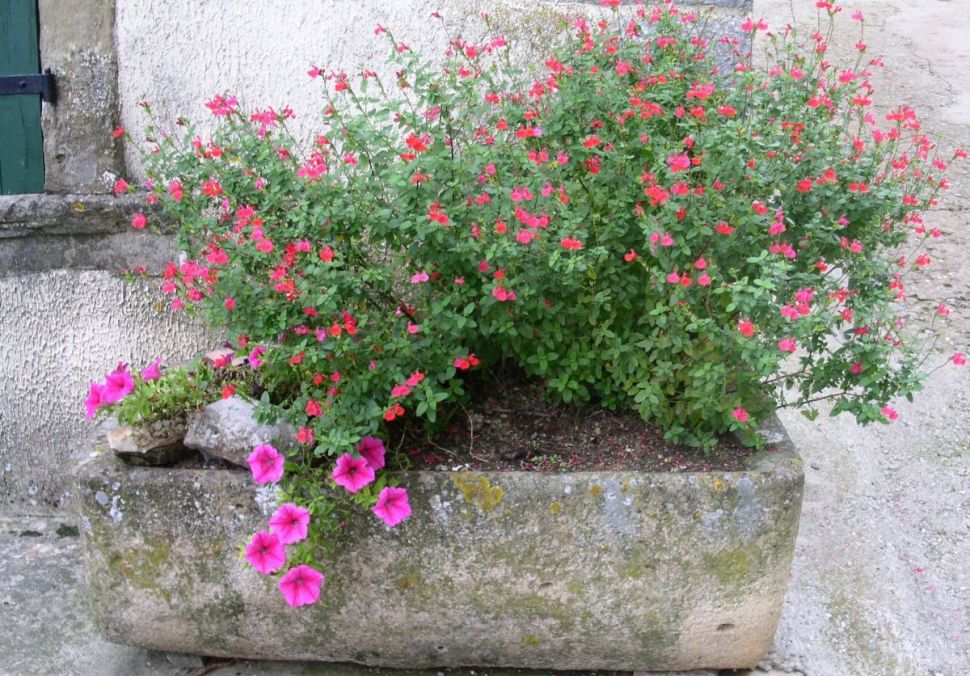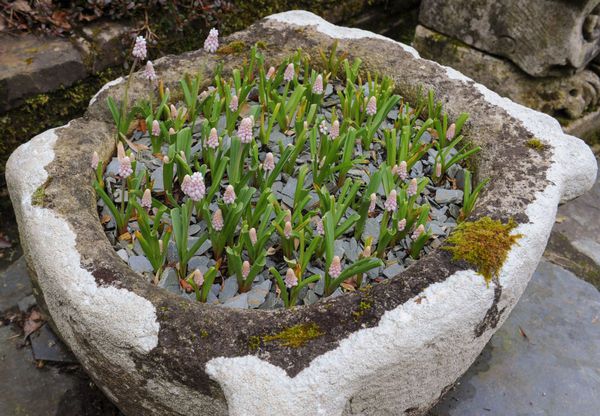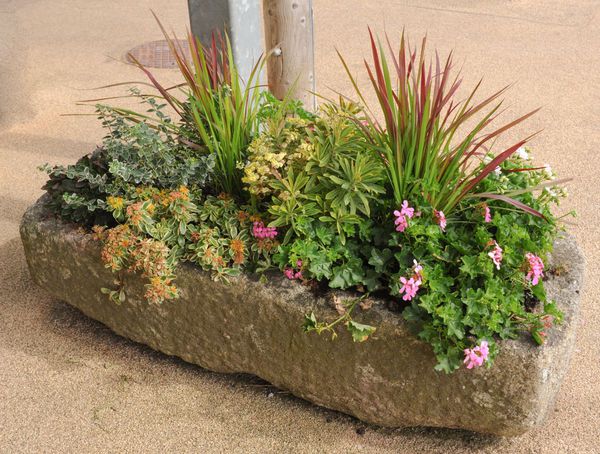The use of antique stone troughs in the garden

Stone troughs can be of different sizes. In the past they used to be chiselled out of stone and were used as watering or feeding places. The manufacturing of these troughs certainly used to be a demanding craft work. A significant level of craftsmanship was needed to make them and their current value corresponds to that. If you want to buy one, it will not come cheap.
Laborious but also economical, in its times, because stone is practically indestructible. Stone masonry was quite a common trade. In the upshot, it is these troughs that have been preserved till our days and they keep on holding water. There was no other material at disposal then that would be that durable. Stone troughs were chiselled out of granite, sandstone, but also marble. Not only stone but also wooden troughs were used. Of course, the durability was much shorter. Not so many of these dug troughs have been preserved till today. They were also usually used just for solid animal food.
Originally, stone troughs were placed in stables and cow sheds. Later, they gradually moved to gardens. It is a typical Czech feature that many of these were stolen from old abandoned and dilapidated ruins of cottages and placed somewhere else. Some of them cracked, especially because of careless manipulation, others still hold together. With the exception of using them at wells there is no need to keep water in them. Still, it is good to acknowledge the craftsmanship of our ancestors and to find new uses for these troughs – and for the damaged ones, too. A cracked trough, even one split in two parts, can still be repaired.

The most appropriate use for these troughs seems to be to use them as flowerpots. Their narrow and oblong shape seems ideal. Smaller troughs can be placed by the door. Longer ones along the wall of the house, fence etc. A larger trough can be used to divide or border spaces.
The problem of stone troughs is a missing draining hole. It can be made artificially but that would damage the trough. On the other hand, a missing draining hole is a serious problem. During heavy rains, plants would be overwatered and could start rotting away. A compromise solution is to put a drainage layer on the bottom of the trough, such as tiny stones, pebbles etc. The drainage layer must be very thick, though, as the roots of the plant cannot be in water. It is also good to place these troughs at places protected from above – for example by a large tree or a roof overhang.
If the trough has a drainage hole, we must put something beneath it. Otherwise, the water will have nowhere to go. If you place it in the terrain, the water will have nowhere to drain off.




Anyway, it is good to choose such plants for troughs without the drainage hole that can survive higher levels of moisture, or more precisely – overwatering. There are several ones. You should choose plants with smaller root balls. You can use perennials and annuals too. Troughs are also ideal for mosses and alpines. Ornamental dwarfed forms of deciduous and coniferous trees will also do well in them. If you use troughs for alpines you can also appropriately place nice stones in them. You could even create a beautiful miniature of a Japanese garden in the trough.
If you decide to fill the trough with water, it will turn into a practical drinking place for insects, small animals, and birds. Just do not forget to clean the trough and change the water. A larger trough could be used as a miniature garden pond where you could plant some smaller water plants. You could place a stone in it, which would protrude from the water. That would make it more accessible for the animals.

A nicely shaped trough could also become an outdoor washbasin (with a drainage hole, of course). It would even suit the bathroom at your country house. They could also be placed at a well so that the manually pumped water does not flow away after the vessel is full. You just need to put a piece of board on the trough, the vessel can be put on the board. A nicely arranged group of stones, interesting pieces of wood, or an old ceramic jug and other things can be put inside the trough. And here you go, there comes an original piece decoration.

Source: www.ceskestavby.cz
